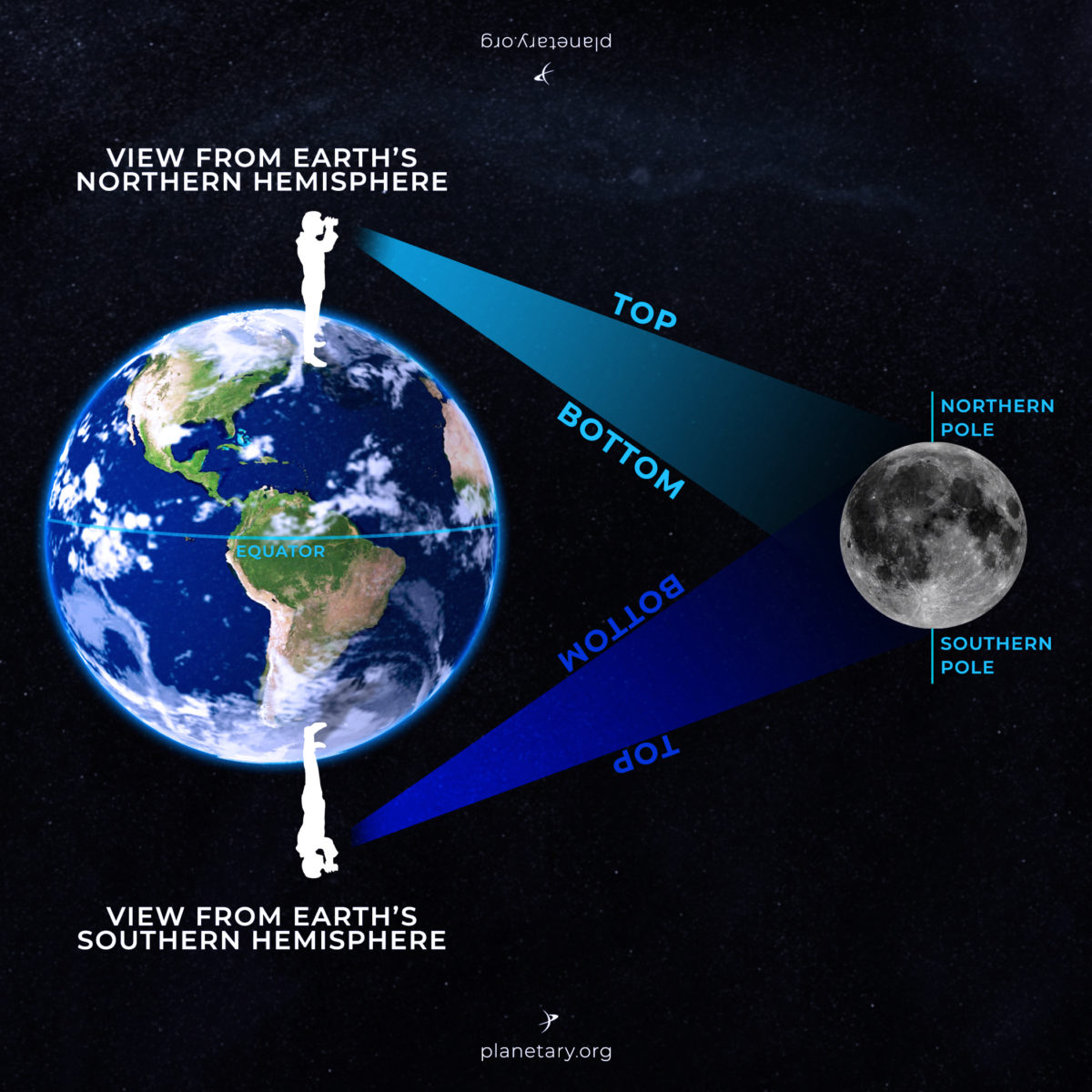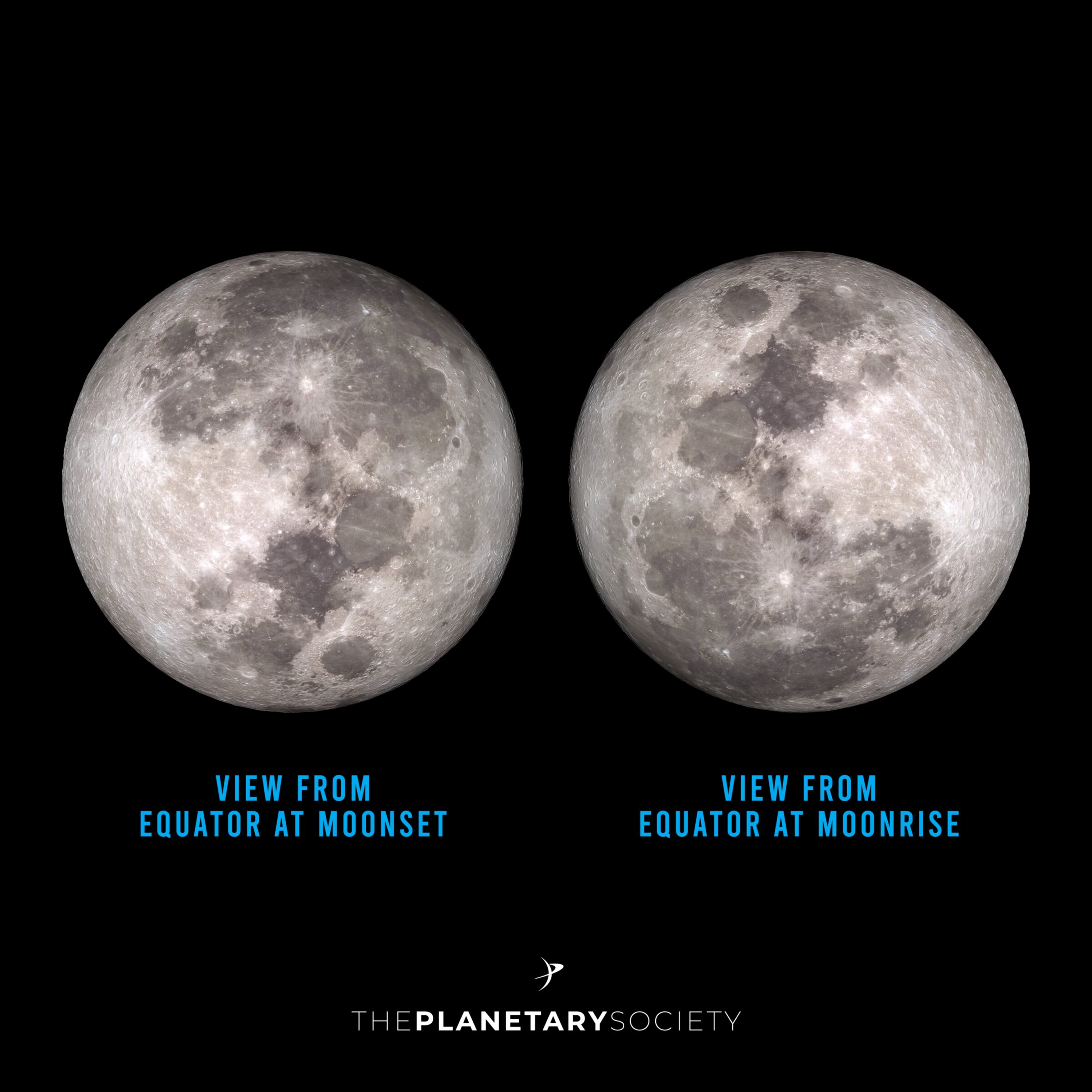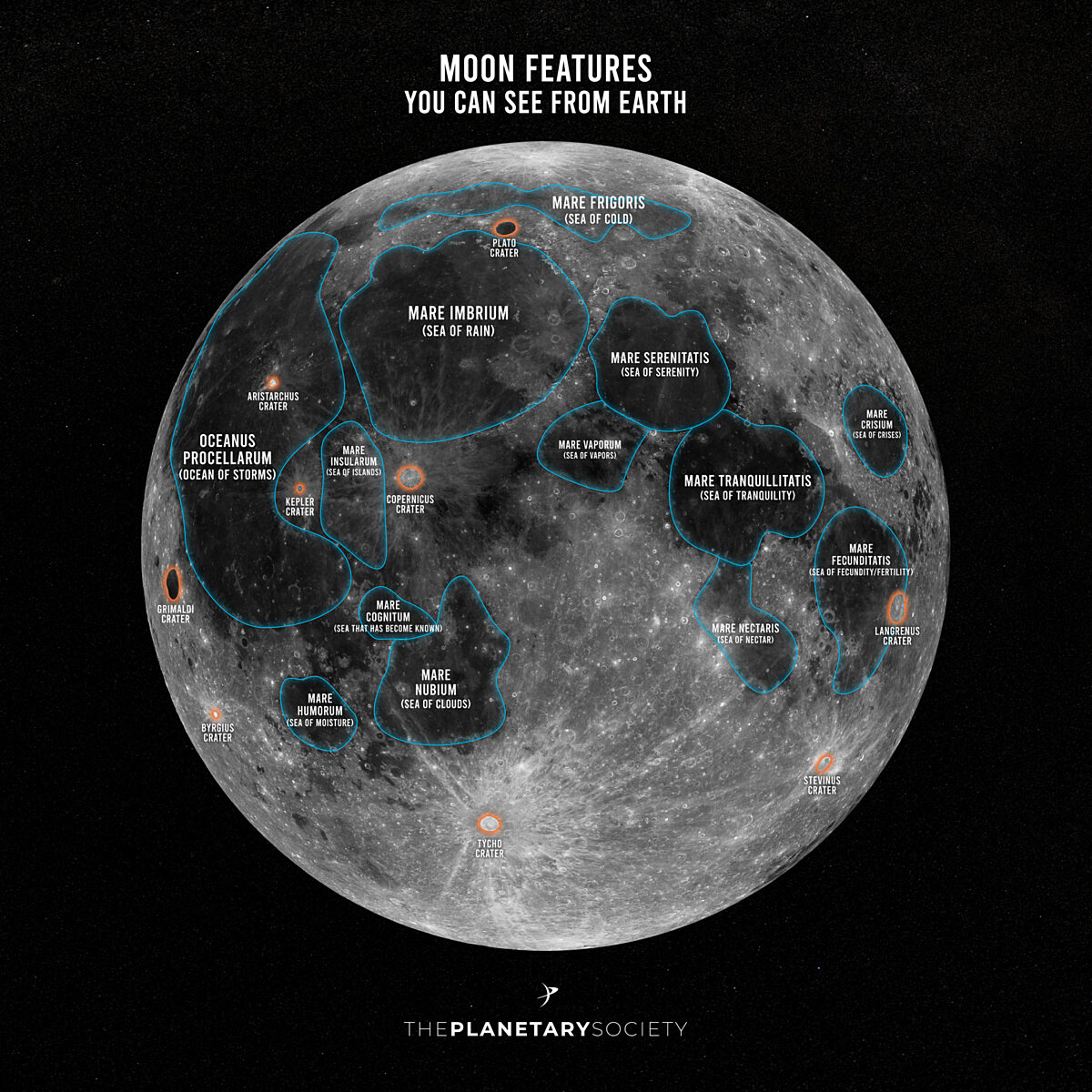Kate Howells • Sep 25, 2020
Can the Moon be upside down?
Which way up does the Moon face? Where is its top and bottom? The answer to these questions depends on your latitude.
Did you know that the Moon looks different from Earth’s northern and southern hemispheres? Someone looking at the Moon from our north pole would see it upside down compared to someone seeing it from the south pole. And someone on the equator would see it at various orientations throughout the day.
This fact is as fascinating as it is mind-bending, so let’s try to wrap our heads around it.
Because the Moon orbits the Earth around (though not directly in line with) the Earth’s equator, when you are on either of the Earth’s poles the Moon will never appear overhead; rather, it will always be relatively close to the horizon and you'll perceive the side closest to the ground as the bottom. Because a person standing on Earth’s north pole is upside down compared to someone on the south pole, their perspective of the Moon would be upside down as well.

This difference is pretty easy to intuitively understand. The complicated part is what happens when you move closer to the equator.
It’s important to note here that the Moon doesn’t orbit the Earth perfectly in line with our equator. There are a few things going on here: the Earth’s axis is tilted, the Moon’s orbit is tilted, and everything is always moving and changing. But for simplicity’s sake, let’s pretend that the Moon orbits the Earth around the equator. This will make it easier to understand without changing any major conclusions about how we see the Moon from different latitudes.
In this case, if you were standing somewhere along the Earth’s equator, as the Earth rotated the Moon would rise in the east, pass directly overhead, and then set in the west. From this perspective, as the Moon rose it would have a top and bottom relative to the horizon like it does from any perspective on Earth. But after passing directly overhead, the Moon would set on the opposite side of the sky from where it rose. At that point, it would have the opposite orientation compared to the horizon. So if you asked a person who lived on the equator which part of the Moon was the top, they would have to ask you “at what time?”
Another strange thing about seeing the Moon from this perspective is that its orientation when it rose and set would both look sideways compared to what you’d see nearer either of the poles.

If you traveled north from this middle point, you’d start to see the Moon rise and set farther south in the sky. Then, when you looked at the Moon, there would be an obvious top and bottom that would be consistent over the course of its apparent crossing of the sky.
Likewise, if you go south from the equator, you’ll see the Moon rise and set in the northern sky. Again, you’ll see an obvious top and bottom to the Moon. But it will be the opposite orientation from how you saw it when you were far north from its orbital plane.

The difference between these orientations happens gradually. When you travel just a short distance from the equator, the Moon will still rise more or less due east and set more or less due west, and in between will appear almost directly overhead. But as you travel farther north or south, it will start to appear farther south or north in the sky, respectively.
This is all a bit tricky to wrap your head around, especially when you take into account the slight changes that Earth’s tilted axis creates, plus all the various moving parts: Earth rotating, the Moon orbiting the Earth, and the Earth orbiting the Sun. It’s a great reminder that even something as seemingly simple as our Moon is part of a complex and dynamic system.
This phenomenon happens with other celestial objects as well, as long as they lie near Earth’s orbital plane (which the Moon lies near, though not on). Jupiter, for instance, can look upside down from the north pole compared to how it looks from the south pole. What’s more, its stripes look horizontal when seen near the horizon in both the northern and southern hemispheres of Earth, but from the equator a rising Jupiter’s stripes are vertical.
Moon features you can see from Earth
What can you see on the Moon tonight? This guide from The Planetary Society will help you identify some features.
Support our core enterprises
Your support powers our mission to explore worlds, find life, and defend Earth. You make all the difference when you make a gift. Give today!
Donate

 Explore Worlds
Explore Worlds Find Life
Find Life Defend Earth
Defend Earth


